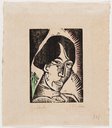Since 2001, the Städel Museum has systematically been researching the provenance of all objects that were acquired
during the National Socialist period, or that changed owners or could have changed owners during those years. The basis
for this research is the “Washington Declaration”, also known as the “Washington Conference Principles”, formulated at
the 1998 “Conference on Holocaust-Era Assets” and the subsequent “Joint Declaration”.
The provenance information is based on the sources researched at the time they were published digitally. However, this
information can change at any time when new sources are discovered. Provenance research is therefore a continuous
process and one that is updated at regular intervals.
Ideally, the provenance information documents an object’s origins from the time it was created until the date when it
found its way into the collection. It contains the following details, provided they are known:
- the type of acquisition and/or the way the object changed hands
- the owner's name and place of residence
- the date on which it changed hands
The successive ownership records are separated from each other by a semicolon.
Gaps in the record of a provenance are indicated by the placeholder “…”. Unsupported information is listed in square
brackets.
If you have any questions or suggestions, please contact the museum at
.
